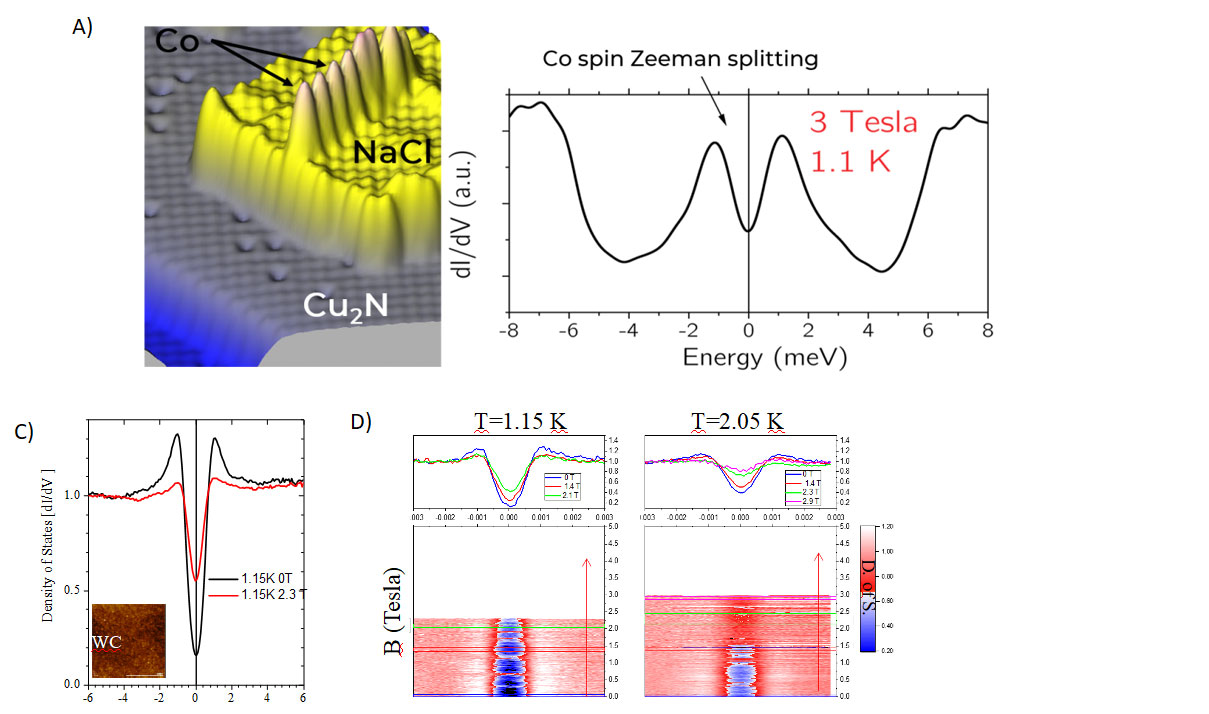HIGH RESOLUTION SPECTROSCOPY
At ELECMI-LMA, users can find the UHV instrument with best energy resolution for spectroscopy in Spain. While there is bunch of STMs with the same base temperature and noise level, this is the only one open to any interested researcher via a scientific proposal to ELECMI. The JT-STM offers excellent performance in all conventional spectroscopic modes constant height or constant current mapping of the density of states, energy resolved density of states at individual points or grids, and spectroscopy in field emission regime. But a thorough electronic filtering of the head voltages, and a base temperature of 1.15 K, pave the way to investigate a thrilling energy range the finest low energy excitations.
- Our calibration experiments yield a resolution of 0.08 meV with standard tips in optimum conditions. This kind of energy resolution is typically applied to the study of elementary excitations vibronic modes of individual molecules, discrete states with different spin quantum numbers, Kondo Physics, magnons, phonons or superconducting quasiparticle gaps.
- This capability becomes specially interesting in combination with the axial magnetic field of 3 Tesla, enabling access to the energy level diagram of quantum spins, as well as to the interactions beween them and with their environment. For instance, the spin-flip spectra of the chain of Co atoms assembled on top of a NaCl patch in panel A can be addressed one by one. Panel B shows an example of our capability to resolve the Zeeman splitting of single quantum spin with third component of +/- 1/2.
- Another field of application is the spatially and energy resolved characterization of superconducting materials. Panel C illustrates how the JT-STM can easily probe superconducting gaps as small as 0.4 meV.
- Since real devices do not function at 1 K, in the wish list of researchers in the field of low temperature Physics one can always find testing their dynamical mean field or thermodynamics models in real systems as a function of temperature. The JT-STM is very well suited for this purpose. Its spectroscopy capability remains intact in the temperature range of 1 to 10 K and magnetic fields up to 2.5 Tesla. Panel D gives a good example of that, where the superconducting to normal metal transition of tungsten carbide is explored as a function of field and temperature.






